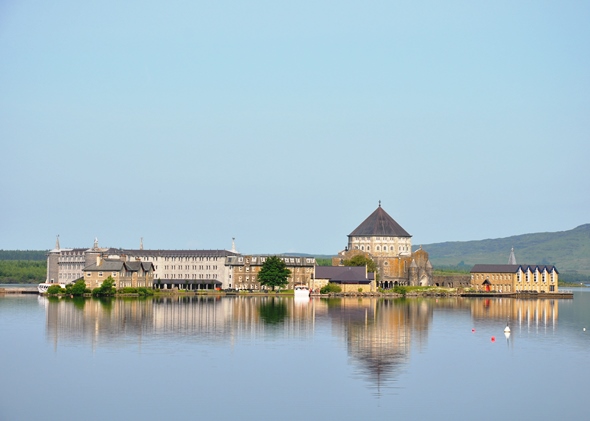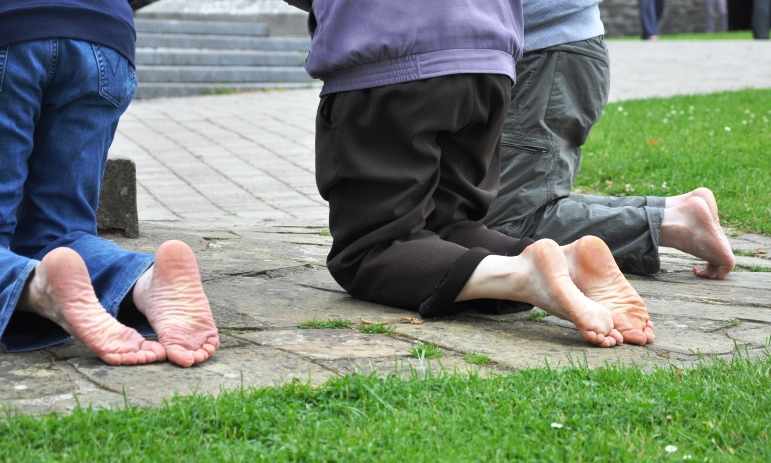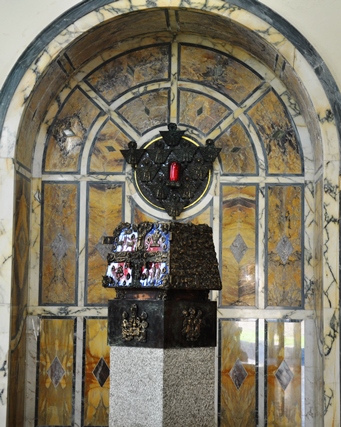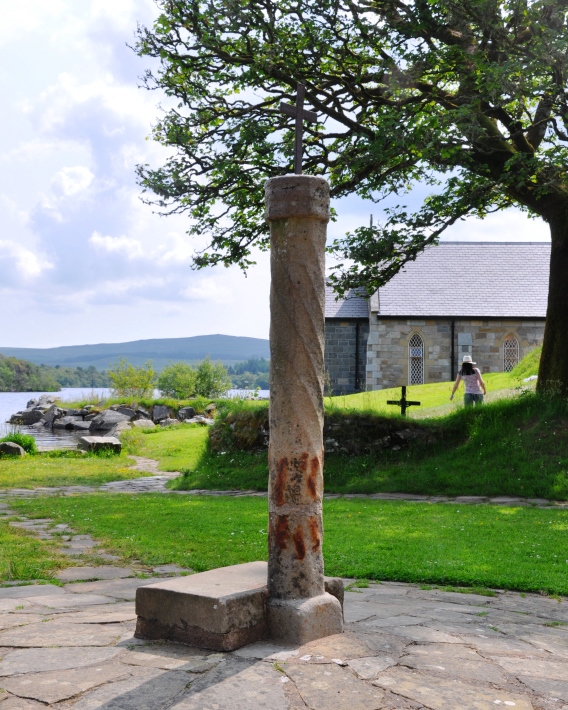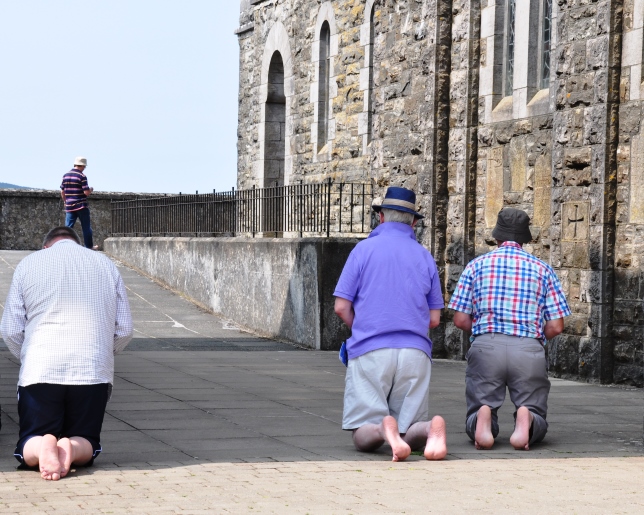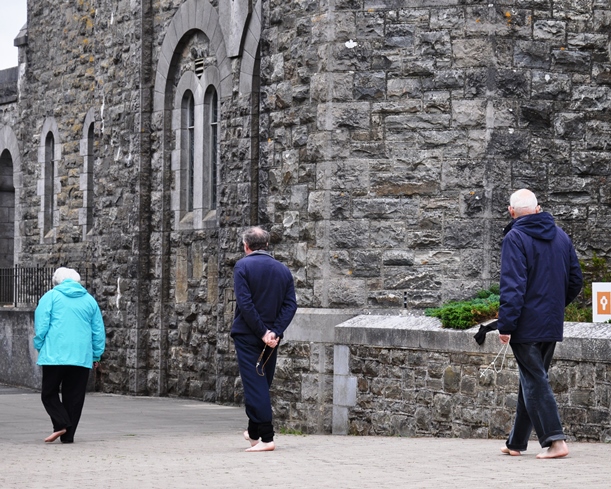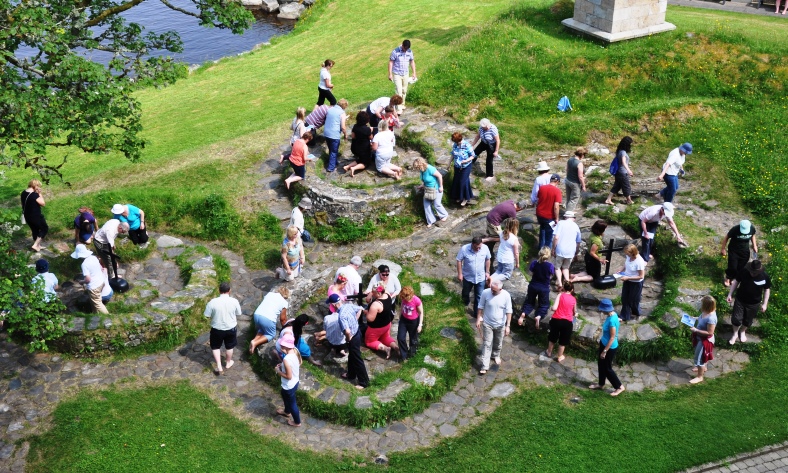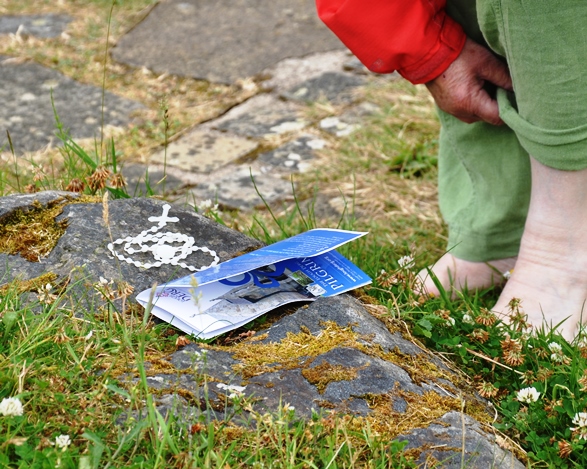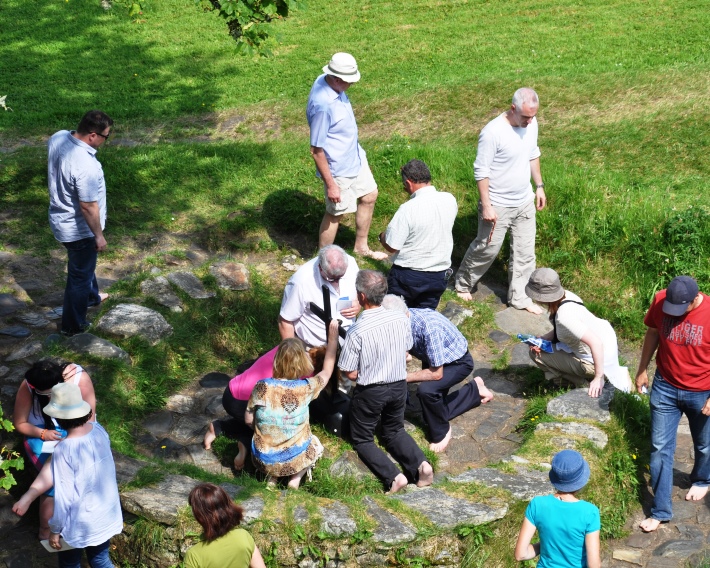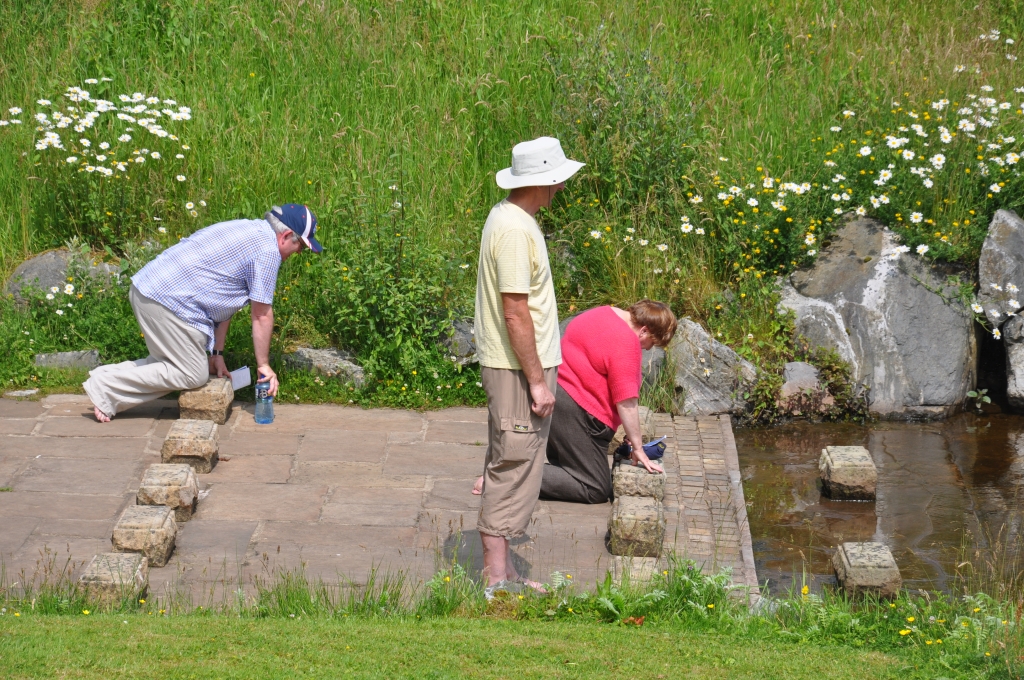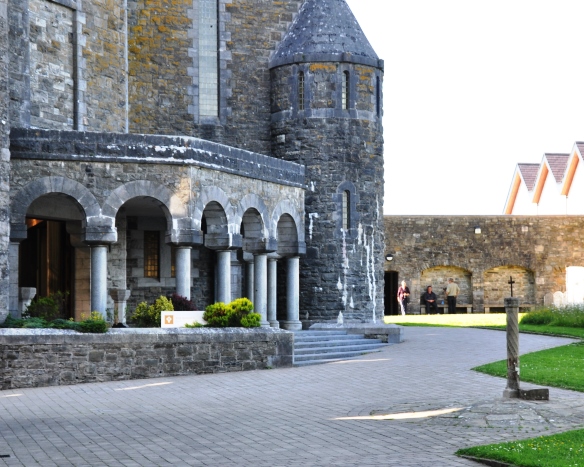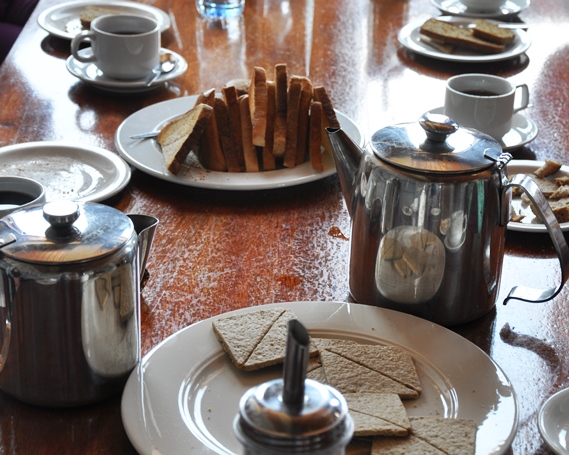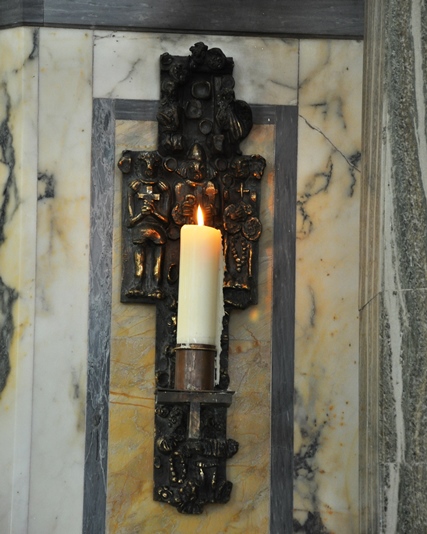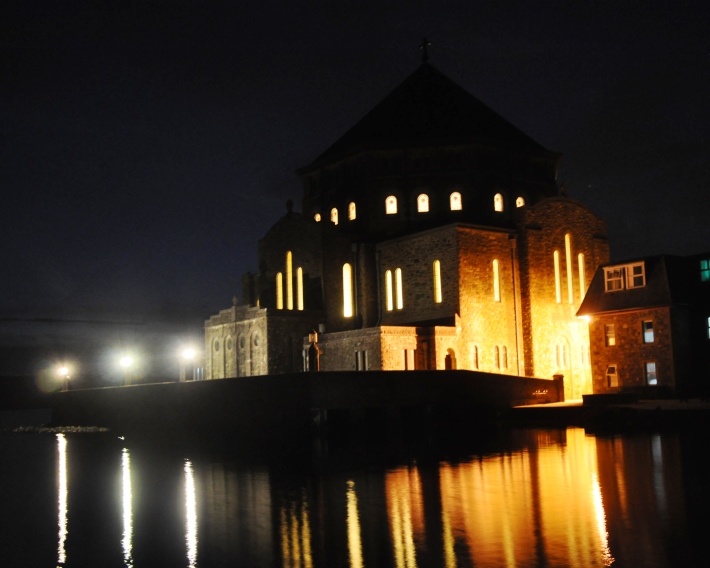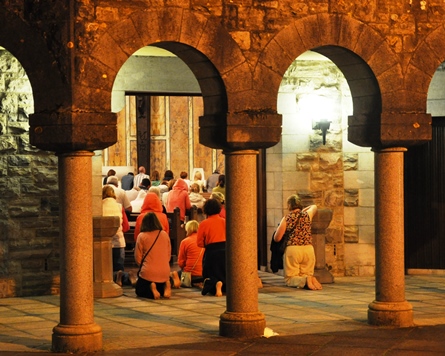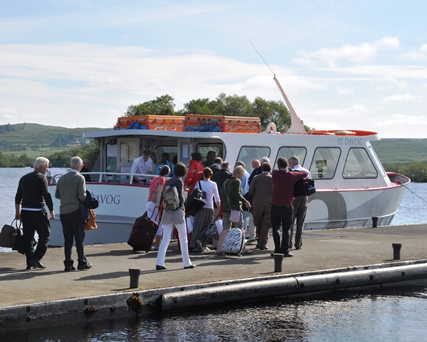Nine Stations, Lough Derg
Lough Derg is one of the main sites of pilgrimage in Ireland. Station Island or St Patrick’s Purgatory is a small island on the lake in south-eastern Donegal. It has been a place of pilgrimage and retreat for over 1,000 years. The primary practice associated with the island is the three pilgrimage which sees the pilgrims fasting, keeping Vigil, going barefoot and completing a series of exercises and a set number of ‘stations’.
I recently completed the pilgrimage and later returned to the island as a researcher observing and discussing the pilgrimage. To give a sense of what is involved in this pilgrimage, I have put together this account of the pilgrimage station and some of the exercises. It is a synthesis of observations and recordings over a four day period.
Pilgrims arrive on the morning/early afternoon of the first day, having fasted since midnight. The journey across to the island is the physical element of the break from the world, this is also facilitated through the non-use of mobiles. A central component of a pilgrimage is a break from the everyday which allows pilgirms to consider deeper more meaningful aspects of their lives.
Pilgrims remove their shoes almost immediately on the island. As well as being part of the traditional penitential exercise, the removing footwear creates an equality and shared-experience among the pilgrims. It doesn’t matter what you do outside of Lough Derg, everyone is equal.
The Bell, standing on the site of the original cave in which pilgrims spent their Vigil, punctuates daily life, announcing ceremonies in the Basilica and marking the Angelus.
Order of the Station:
Each station begins with a visit to the Blessed Sacrament in tabernacle in St Patrick’s Basilica.
Pilgrims go to St Patrick’s Cross, adjacent to the Basilica, kneel down, and say one Our Father, one Hail Mary and one Creed; and finish by kissing the Cross.
At Brigid’s Cross, on the outside wall of the Basilica, pilgrims again kneel down and this time say three Our Fathers, three Hail Marys and one Creed. Standing with their back to the Cross and arms outstretched, they say three times “I renounce the World, the Flesh and the Devil”.
The Basilica is then rounded four times, clockwise, during which seven decades of the Rosary and one Creed, at the end, are prayed silently.
There are six penitential beds – St Brigid’s, St Brendan’s, St Catherine’s, St Columba’s, St Patrick’s and Saints Davog and Molaise’s (the latter two are a double bed). At each bed the pilgrims: walk three times around the outside, clockwise, while saying three Our Fathers, three Hail Marys and one Creed; kneel at the entrance to the bed and repeat the prayers; walk three times around the inside and say the prayers again; and, finally, kneel at the Cross in the centre and say these prayers for the fourth time. There is a slight variation at the last double bed which is circled six times, while saying six Our Fathers, six Hail Marys and one Creed.
Pilgrims frequently carry Rosary beads on the station to assist in the saying of prayers. The pilgrim leaflet acts a guide to the stations and is carried around as well
Large numbers of pilgrims frequently complete the stations together. Here there are number of people circling the outside of St Columba’s Bed, two kneeling and four at the cross in the centre.
At the water’s edge, pilgrims stand saying five Our Fathers, five Hail Marys and one Creed and then kneel repeating these prayers; after which they, make the Sign of the Cross with the lake water as a reminder of their Baptism.
Pilgrims return to St Patrick’s Cross; kneel down and say one Our Father, one Hail Mary and one Creed. They proceed to the Basilica and conclude the station by reciting Psalm 16 (or by saying five Our Fathers, five Hail Marys and One Creed), for the Pope’s intentions.
The Lough Derg Meal, which is available at any stage from 1.15-8.15, consists of black tea or coffee (sugar is available) with dry bread, toast and oatcakes. This is eaten once on Day 1 and 2, pilgrims are allowed a similar meal off the island on Day 3.
Night Vigil:
The all-night Vigil is a central part of the Lough Derg pilgrimage, it involves pilgrims staying awake for 24 hours. It begins with the group gathering in the Basilica and the doors being locked. This refers back to a time when pilgrims spent the Vigil in a cave or when they were locked into the ‘Prison Chapel’. While it remains symbolic as the doors are opened later and pilgrims are free to move around the Basilica, it still resonates as a group of people cut themselves off from the world and pray together throughout the night.
The Vigil Candle remains lighting for the 24-hour period, its lighting marking the beginning of the Vigil and its extinguishing, at Night Prayer, signifies that the pilgrims can go to their beds.
The light and sounds of the the vigil pour out from the Basilica on an otherwise silent island.
During the night, four stations are completed within the Basilica. One of the pilgrims leads the prayers, with everyone else responding. The communal prayer helps each person keep their Vigil
The doing of the station within the Basilica involves pilgrims circulating while following the pattern of movements (rounding, kneeling, standing), as if they were outside.
On the morning of Day 3, pilgrims, having completed all the stations, put on their shoes, gather their belongings and leave the island. However, they continue fasting until midnight that night. The fantastic and tranquil feelings this morning is hard to describe, but many are confident they will return.
While Lough Derg is firmly one of those places that must be personally experienced to truly understand it, I hope I have in some conveyed even a sense of the place and the practices. I would urge anyone with an interest or subtle desire, to go on pilgrimage to Lough Derg; it will be worth it. The three day pilgrimage runs from 31st May – 13th August annually (see the website for further details).
